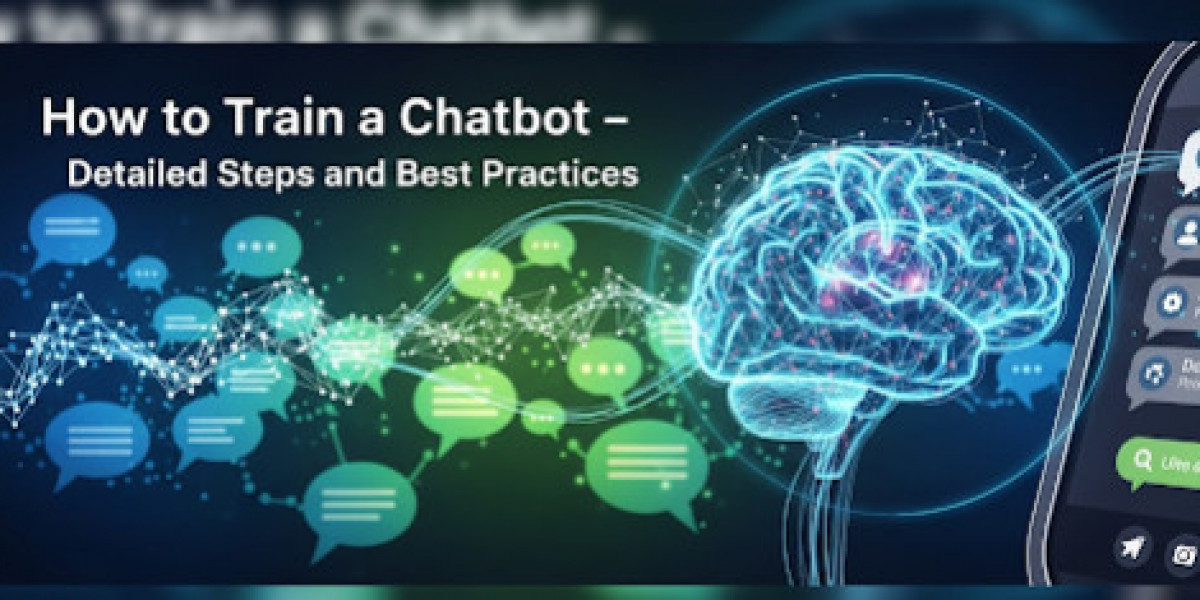Training a chatbot is a rewarding yet intricate process that requires careful planning and ongoing effort. Whether you’re building a chatbot for customer service, education, or entertainment, the goal is to create a tool that understands user needs and delivers accurate, engaging responses. Below, we provide a comprehensive guide on how to train a chatbot, incorporating practical steps, examples, and tips to ensure success.
Step 1: Define the Chatbot’s Specific Use Cases
The first step in training a chatbot is to clearly define its purpose. This involves identifying the specific business problems or tasks it will address. For example, if you’re developing a chatbot for an e-commerce website, you might want it to handle queries about product availability, shipping details, or return policies. However, it’s crucial to prioritize high-volume queries to maximize the chatbot’s impact. For instance, if order status inquiries make up less than 3% of customer interactions, it may not be worth training the chatbot for that task.
Why this matters: A focused scope ensures the chatbot is efficient and relevant.
Example: A travel agency chatbot might prioritize booking flights or answering FAQs about destinations over less common queries like visa requirements.
Step 2: Ensure Intents Are Distinct
Once you’ve outlined the use cases, the next step in training a chatbot is to create distinct intents. An intent represents the user’s goal when interacting with the chatbot, such as “buy a product” or “track an order.” Distinct intents prevent overlap and confusion, ensuring the chatbot responds accurately.
Tip: Avoid broad intents like “customer support.” Instead, use specific ones like “#buy_product” or “#track_order.”
Example: For a retail chatbot, separate intents for “return an item” and “exchange an item” to avoid misinterpretation.
Step 3: Include Many Utterances Per Intent
To train a chatbot effectively, you need to include a variety of utterances for each intent. Utterances are the different ways users might express the same goal. For example, for the intent “buy a product,” utterances could include:
“I want to purchase this item.”
“Can I buy it now?”
“Add this to my cart.”
“How do I get this product?”
Including diverse utterances helps the chatbot recognize real-world language variations. Similarly, iterating on utterances regularly ensures the chatbot adapts to evolving user behavior.
Step 4: Create a Diverse Training Team
In comparison to relying on a single developer, assembling a diverse training team can significantly improve the chatbot’s performance. A team with varied backgrounds—such as marketing, customer service, or even external testers—can test the chatbot across different scenarios, identifying potential biases or gaps.
Why this matters: A diverse team ensures the chatbot is inclusive and effective for all users.
Example: A team with members from different regions can test for regional dialects or cultural nuances.
Step 5: Ensure Entities Are Purposeful
Entities are keywords or phrases that provide context to an intent. For example, in the query “What’s the weather like today in New York?”, “today” and “New York” are entities that specify the date and location. When training a chatbot, tag only purposeful entities to avoid cluttering the system with unnecessary data.
Examples of entities:
Date and time: “today,” “tomorrow,” “next week”
Location: “New York,” “London,” “Paris”
Product names: “iPhone,” “Samsung Galaxy,” “Sony PlayStation”
User information: “my name is John,” “my email is john@example.com”
Tip: Avoid tagging single words like “Barcelona” unless they’re critical to the context.
Step 6: Add Personality
Despite the technical nature of chatbots, adding personality can make interactions more engaging. The chatbot’s tone should align with your brand’s voice. For instance, a professional brand might opt for a formal tone, while a casual brand might prefer a friendly, conversational style.
Example: A travel chatbot could say, “Hey there! Ready to plan your next adventure?” while a banking chatbot might use, “Hello! How can I assist with your account today?”
Step 7: Use Media Elements
Especially in e-commerce, incorporating media elements like images, videos, or buttons can enhance the user experience. For example, a retail chatbot might display product images or include a “Add to Cart” button to streamline the shopping process.
Why this matters: Media elements make conversations more interactive and can drive actions like purchases.
Example: A chatbot for a clothing store could show images of recommended outfits alongside text responses.
Step 8: Continuous Training
Training a chatbot doesn’t stop after deployment. Continuous monitoring and refinement are essential to keep it effective. Tools like AI call transcription can provide insights into real user interactions, helping you update intents, utterances, and entities as needed.
Tip: Review user queries that the chatbot couldn’t answer to identify new intents or utterances.
Example: If users frequently ask about a new product feature, add relevant intents and utterances to address those queries.
Additional Tips for Training a Chatbot
Not all chatbots need advanced AI: For simpler use cases, decision tree-based chatbots can be more efficient than complex NLP models.
Explore diverse applications: Chatbots can serve beyond customer service, such as in education, healthcare, or entertainment.
Consider ethical implications: When training a chatbot, prioritize user privacy and data security to build trust.
Unique Applications of Chatbots
One fascinating use of chatbots is in companionship. For example, some chatbots are designed to act as virtual assistants or even AI girlfriends, offering emotional support and conversational engagement. These chatbots require careful training to ensure respectful and appropriate interactions, avoiding any harmful or unethical behavior.
Tools and Platforms for Training a Chatbot
Several platforms simplify the process of training a chatbot, especially for those without advanced technical skills:
Platform | Key Features | Best For |
Chatbot.com | AI Training module, phrase categorization, AI Assist for dynamic responses | Businesses with customer support needs |
Labelbox | Data annotation for domain-specific chatbots | Custom, industry-specific chatbots |
Voiceflow | Quick training, integration with NLP tools | Beginners and small businesses |
Botpress | Autonomous Nodes for defining personality and purpose | Professional and enterprise use |
These platforms offer user-friendly interfaces and tools to streamline how to train a chatbot, making it accessible even for non-developers.
Conclusion
Training a chatbot is a multifaceted process that requires careful planning, diverse data, and ongoing refinement. By following these steps—defining use cases, creating distinct intents, including varied utterances, assembling a diverse team, tagging purposeful entities, adding personality, using media elements, and committing to continuous training—you can build a chatbot that delivers value to users and supports your business goals. With the right approach, your chatbot can become a powerful tool for engagement and efficiency.








